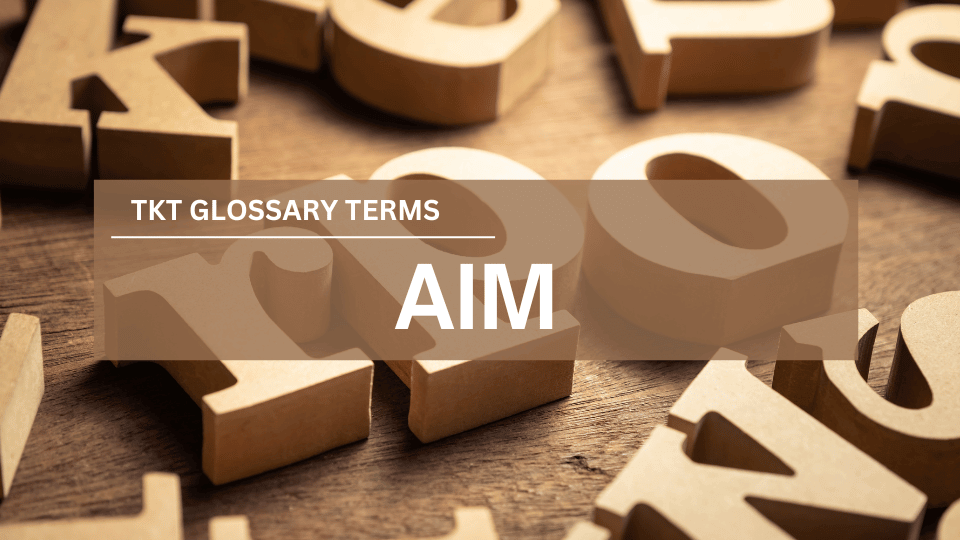
Aim
In English Language Teaching (ELT), the term aim means the specific goal a teacher wants to reach by the end of a lesson or course. It gives direction and focus to both the teacher and students, making sure all activities work towards a clear goal.
Definition mentioned in the TKT Glossary:
What the teacher wants to achieve in the lesson or in the course.
Reasons for an aim
Clarity and focus
Aims help the teacher plan lessons with clear objectives, ensuring that every activity has a purpose.
Example: “By the end of the lesson, students will be able to use comparative adjectives to describe two objects.”
Measuring progress
They act as benchmarks for evaluating learners’ understanding and skills development.
Example: If the aim is for students to use the past simple tense to describe past events, their ability to narrate a short story will indicate whether the aim was achieved.
Motivation for learners
Knowing the aim of a lesson gives students a sense of purpose, helping them understand the relevance of tasks.
Example: A lesson on ordering food in a restaurant teaches practical conversational skills that are immediately applicable.
Consistency across a course
Setting aims for each lesson ensures that individual lessons contribute to the broader goals of the course.
Example: A course aim might be to improve speaking fluency, and each lesson contributes by targeting subskills like turn-taking, using fillers, or asking questions.
Importance of an aim
In lesson planning
Aims guide the choice of activities, materials, and assessment methods, ensuring all components align with the desired outcomes.
Example: For a lesson aimed at improving reading subskills like skimming, the teacher might select an article with a clear headline and structured sections.
In course design
Aims ensure that the course covers all necessary skills and knowledge systematically.
Example: A beginner-level course might aim to develop basic survival English, including greetings, asking for directions, and shopping vocabulary.
Assessment of effectiveness
Teachers can evaluate their own teaching by checking if the lesson aims were achieved. Similarly, students can assess their progress by reflecting on whether they met the objectives.
Example: A teacher can use role-play scenarios to check if students can effectively give directions, as aimed in the lesson.
To sum up, aims in ELT help create effective lesson plans, align with course goals, and guide teachers and learners to achieve meaningful results.
Can you think of other reasons for aims and importances of aims? Jot them down in your notebook.
Want to get back to the main list? Just click the first letter of the term you want to study.

Meet the Trainer – Noel Perera
Noel loves helping new teachers improve their skills and grow their careers. He has worked with many TKTiers worldwide, guiding them for the exam and enhancing their teaching methods. Ace The TKT holds his knowledge and experience gained over 18 years as an English teacher and trainer.
Disclaimer
This independent platform offers resources and support for individuals preparing for the Teaching Knowledge Test (TKT). It is not affiliated with or endorsed by the University of Cambridge or Cambridge Assessment English.
The terms TKT and Cambridge are trademarks and intellectual property of the University of Cambridge. All references to these terms are intended for educational purposes only. The content and materials on this website are independently developed and do not constitute official Cambridge resources.
For official information about TKT, please visit the Cambridge Assessment English website.

